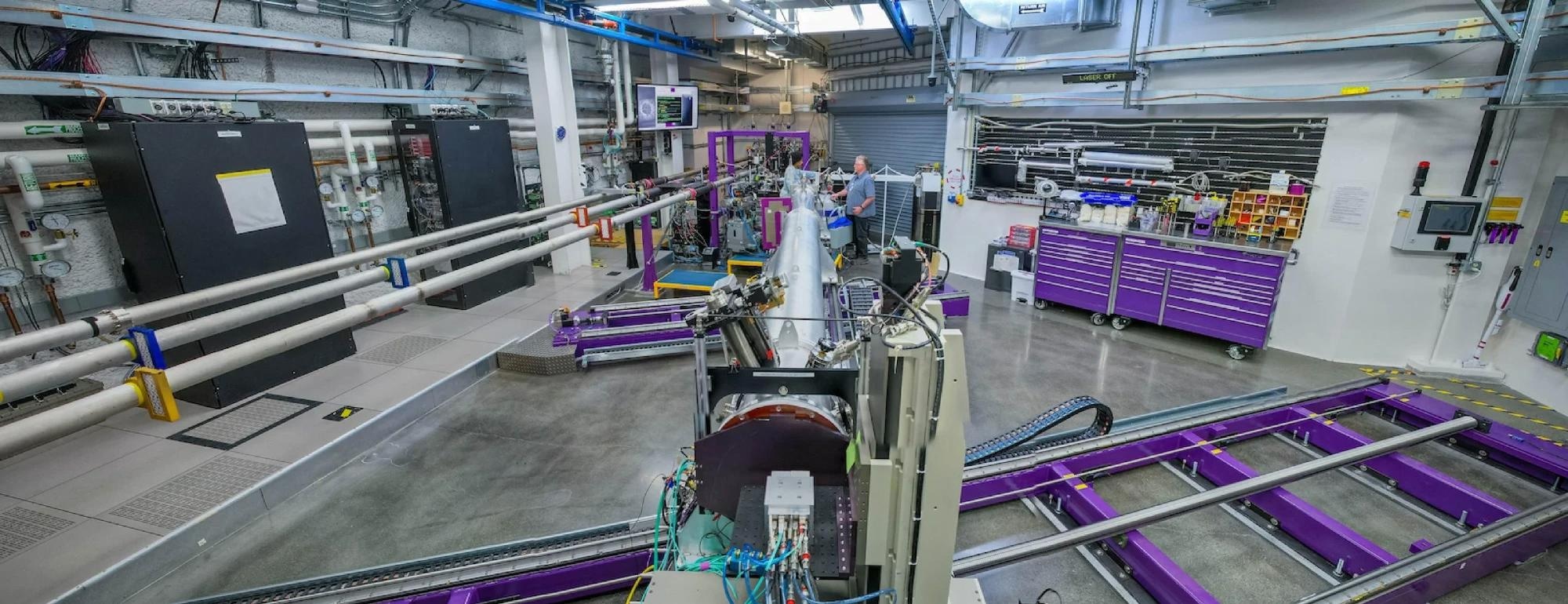Researchers have pioneered an innovative technology capable of visualizing sound waves and minute imperfections within crystals. This breakthrough offers the potential to uncover profound insights bridging the gap between ultrafast atomic movements and overarching macroscopic phenomena.

Scientists developed a groundbreaking technology that allows them to see sound waves and microscopic defects inside crystals, promising insights that connect ultrafast atomic motion to large-scale macroscopic behaviors. Image Credit: Olivier Bonin/SLAC National Accelerator Laboratory
Scientists from the Department of Energy’s SLAC National Accelerator Laboratory, Stanford University, and Denmark Technical University have engineered an advanced X-Ray microscope with the capability to directly visualize sound waves at the most minute scales, specifically at the lattice level within crystals.
Published recently in Proceedings of the National Academy of Sciences, these discoveries have the potential to revolutionize the approach to studying rapid material transformations and their resultant characteristics.
The atomic structure of crystalline materials gives rise to their properties and associated ‘use-case’ for an application. The crystalline defects and atomic scale displacements describe why some materials strengthen while others shatter in response to the same force.
Leora Dresselhaus-Marais, Researcher and Assistant Professor, Stanford University
Dresselhaus-Marais added, “Blacksmiths and semiconductor manufacturing have perfected our ability to control some types of defects, however, few techniques today can image these dynamics in real-time at the appropriate scales to resolve how those the distortions connect to the bulk properties.”
In this new study, the team produced soundwaves within a diamond crystal and harnessed their newly developed X-Ray microscope to directly capture the subtle distortions within the crystal's lattice structure. They achieved this feat by synchronizing with the natural timescales of these atomic-scale vibrations, utilizing the ultrafast and ultrabright pulses accessible at SLAC's Linac Coherent Light Source (LCLS).
To isolate the deviations in the crystal’s structure induced by the sound wave and defects, the scientists strategically positioned a specialized X-Ray lens along the beam diffracted by the crystalline lattice, effectively filtering out the pristine, perfectly aligned portions of the crystal. This focused their observations on the regions where the crystal exhibited structural alterations.
We used this to image how an ultrafast laser transfers its light energy into heat via successive reflections of the out-of-equilibrium sound wave off the front and back surface of the crystal. By showing this in diamond – a crystal with the fastest sound speed – we illustrate the new opportunities now available with our microscope to study new phenomena deep inside crystals.
Leora Dresselhaus-Marais, Researcher and Assistant Professor, Stanford University
These findings offer a non-invasive method to observe incredibly rapid material transformations, overcoming the limitations of previously sluggish tools. Prior to this discovery, researchers lacked the capability to capture these swift changes, which hold significant importance for phenomena such as the propagation of heat and sound wave dynamics.
The ramifications of this groundbreaking development span a multitude of fields, encompassing materials science, physics, and even extending to domains like geology and manufacturing.
By comprehending the atomic-level alterations that precede macroscopic events in materials, scientists can gain deeper insights into transformations, melting processes, and chemical reactions, accessing an entirely new realm of timescales spanning 13 orders of magnitude.
This new tool offers us a unique opportunity to study how rare events caused by defects, atomic-distortions, or other localized stimuli inside a lattice give rise to macroscopic changes in materials.
Leora Dresselhaus-Marais, Researcher and Assistant Professor, Stanford University
Dresselhaus-Marais added, “While our understanding of the macroscopic changes in materials is rather advanced, we are often missing the details of which ‘instigating events’ ultimately cause the phase transformations, melting, or chemistry we observe at larger scales. With ultrashort timescales now at our fingertips, we have the ability to hunt for these rare events at their native timescales.”
Journal Reference
Holstad, T. S., et al. (2023) Real-time imaging of acoustic waves in bulk materials with X-Ray microscopy. Proceedings of the National Academy of Sciences. doi.org/10.1073/pnas.2307049120.